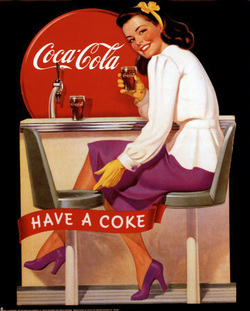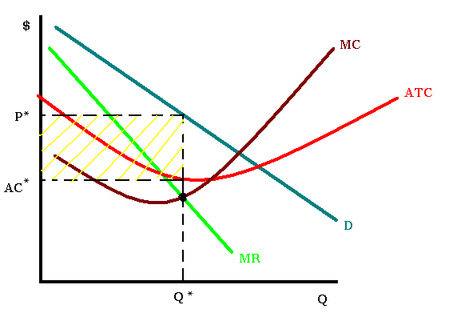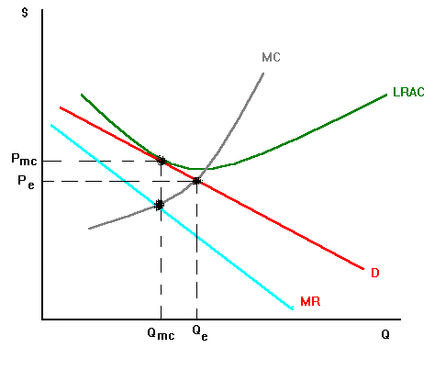Key Concepts

3 Conditions of Monopolistic Competition
1. Large number of competing producers.
2. Differentiated Products
3. Free Entry and Exit to Market (No Barriers)
In order to differentiate themselves, businesses use advertising or non-price competition.
Ex:
- Coca Cola
At the equilibrium (intersecting ATC), in the long run, a firm gains zero economic profits.
When the Marginal Cost is less than the price per unit, the firm is considered Allocatively Inefficient.
The firms are price setters and make prices less than the Marginal Revenue (Pricing Strategy)
In the long run, Monopolistically Competitive firms are inefficient because they underuse their full capacity.
1. Large number of competing producers.
2. Differentiated Products
3. Free Entry and Exit to Market (No Barriers)
In order to differentiate themselves, businesses use advertising or non-price competition.
Ex:
- Coca Cola
At the equilibrium (intersecting ATC), in the long run, a firm gains zero economic profits.
When the Marginal Cost is less than the price per unit, the firm is considered Allocatively Inefficient.
The firms are price setters and make prices less than the Marginal Revenue (Pricing Strategy)
In the long run, Monopolistically Competitive firms are inefficient because they underuse their full capacity.
Key Formulas
· Marginal Revenue = Marginal Cost (MR=MC) – Profit Maximizing Point
Key Graphs

Graph 1 (Short-Run Profits)
- Quantity is found by drawing a line strait down from where MR=MC.
- Average Cost (AC*) is found when a line is draw through MR=MC strait up to the Average Total Cost (ATC) curve.
- Price is found where Q* and P* intersect the Demand (D) curve.
- The yellow box shows profit between the AC* and P* lines at the quantity Q*

Graph 2 (Inefficiency of Monopolistic Competition)
- In monopolistic competition: too little of the good is produced, so the prices are too high.
- Long Run Average Costs are higher than Marginal Costs.
- Differentiation can allow firms to raise prices and profits although profits may not rise because of higher costs.
